Xplore secures $16.2M in venture funding and customer contracts
Wednesday, 02 March 2022 03:53 Xplore Inc. announced it has received $16.2 million in funding to date. The company has aligned itself with exceptional strategic and veteran space sector investors, including: Alumni Ventures, Brightstone Venture Capital, KittyHawk Ventures, Private Shares Fund, Starbridge Venture Capital, Helios Capital, Lombard Street and Gaingels. Notable investors also include Tremendous View, Kingfisher Ca
Xplore Inc. announced it has received $16.2 million in funding to date. The company has aligned itself with exceptional strategic and veteran space sector investors, including: Alumni Ventures, Brightstone Venture Capital, KittyHawk Ventures, Private Shares Fund, Starbridge Venture Capital, Helios Capital, Lombard Street and Gaingels. Notable investors also include Tremendous View, Kingfisher Ca SpaceX Falcon 9 rocket to launch Inmarsat's newest satellite
Wednesday, 02 March 2022 03:53 A SpaceX Falcon 9 rocket will launch the second in the Inmarsat-6 series of satellites, I-6 F2, from Cape Canaveral, Florida in Q1 2023. Japan's Mitsubishi Heavy Industries launched the first of the series, I-6 F1, in December 2021 and its fully electric propulsion system is now raising it to a geostationary orbital slot, 36,000km (22,000 miles) over the Indian Ocean. I-6 F1 will enter service i
A SpaceX Falcon 9 rocket will launch the second in the Inmarsat-6 series of satellites, I-6 F2, from Cape Canaveral, Florida in Q1 2023. Japan's Mitsubishi Heavy Industries launched the first of the series, I-6 F1, in December 2021 and its fully electric propulsion system is now raising it to a geostationary orbital slot, 36,000km (22,000 miles) over the Indian Ocean. I-6 F1 will enter service i Atlas 5 launches GOES-T weather satellite
Wednesday, 02 March 2022 01:32
An Atlas 5 successfully launched the latest in a series of geostationary weather satellites March 1, exactly four years after the launch of the satellite it is replacing.
The post Atlas 5 launches GOES-T weather satellite appeared first on SpaceNews.
General Atomics and Orion Space win contracts for military weather satellites
Tuesday, 01 March 2022 23:43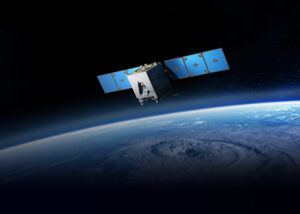
The U.S. Space Force selected General Atomics Electromagnetic Systems and Orion Space Solutions to each develop and launch demonstration satellites for weather imaging and cloud characterization.
The post General Atomics and Orion Space win contracts for military weather satellites appeared first on SpaceNews.
Lockheed Martin plots U.K. satellite manufacturing base
Tuesday, 01 March 2022 18:28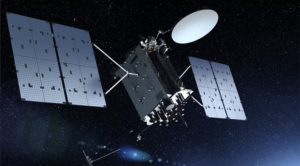
TAMPA, Fla. — Lockheed Martin is looking to set up a satellite manufacturing base in the United Kingdom to expand its global space business, the U.S.-based aerospace and defense giant said March 1.
The facility could potentially focus on building entire satellites, their parts or ground networks for government and commercial customers, according to Nik Smith, Lockheed Martin’s U.K. and Europe regional director for space.
Smith said the plans are still in the “fact-finding and feasibility” stage but also involve creating a research and development center in the U.K., and using the country to access more export markets.
Russian-European Mars rover 'very unlikely' to launch this year
Tuesday, 01 March 2022 17:47 A Russian-European mission to land a rover on Mars is "very unlikely" to launch this year due to sanctions over Moscow's invasion of Ukraine, the European Space Agency said.
The launch of the Rosalind Franklin rover, whose mission is to drill into Martian soil to seek out signs of life, was originally planned for 2020 but postponed due to Covid-19 and technical delays.
In January the ESA
A Russian-European mission to land a rover on Mars is "very unlikely" to launch this year due to sanctions over Moscow's invasion of Ukraine, the European Space Agency said.
The launch of the Rosalind Franklin rover, whose mission is to drill into Martian soil to seek out signs of life, was originally planned for 2020 but postponed due to Covid-19 and technical delays.
In January the ESA NASA to launch sophisticated weather satellite
Tuesday, 01 March 2022 17:47 NASA plans to launch the latest in an advanced series of weather satellites, the GOES-T, from Florida on Tuesday to improve weather forecasting over the Pacific and western United States.
United Launch Alliance's Atlas V rocket is prepared for liftoff during a two-hour window starting at 4:38 p.m. EST from Complex-41 at Cape Canaveral Space Force Station.
Meteorologists around th
NASA plans to launch the latest in an advanced series of weather satellites, the GOES-T, from Florida on Tuesday to improve weather forecasting over the Pacific and western United States.
United Launch Alliance's Atlas V rocket is prepared for liftoff during a two-hour window starting at 4:38 p.m. EST from Complex-41 at Cape Canaveral Space Force Station.
Meteorologists around th Lockheed Martin selects Raytheon to supply a second payload for missile-warning satellites
Tuesday, 01 March 2022 17:32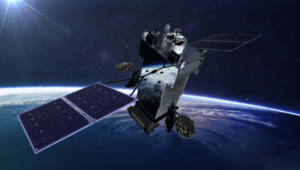
Lockheed Martin announced March 1 it has selected Raytheon Technologies to supply a second payload for the Next Generation Overhead Persistent Infrared (Next Gen OPIR) geosynchronous satellites.
The post Lockheed Martin selects Raytheon to supply a second payload for missile-warning satellites appeared first on SpaceNews.
Lockheed Martin and Northrop Grumman select payload providers for Space Force missile-warning satellites
Tuesday, 01 March 2022 17:32
Lockheed Martin announced March 1 it has selected Raytheon Technologies to supply a second payload for the Next Generation Overhead Persistent Infrared (Next Gen OPIR) geosynchronous satellites.
The post Lockheed Martin and Northrop Grumman select payload providers for Space Force missile-warning satellites appeared first on SpaceNews.
A rocket is going to crash into the moon: Accidental experiment on the physics of impacts in space
Tuesday, 01 March 2022 15:30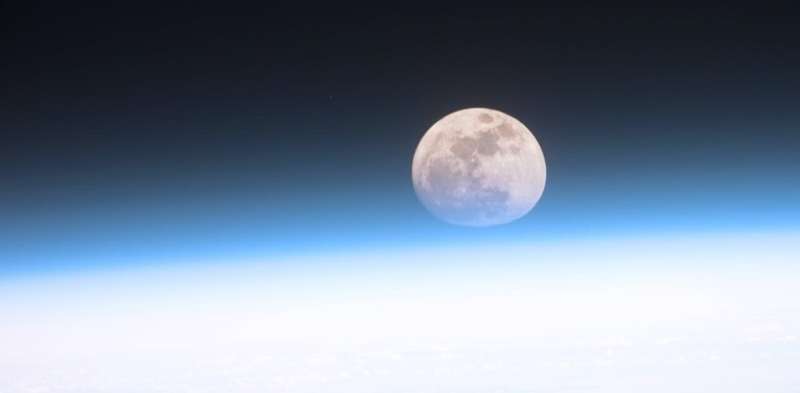
On March 4, 2022, a lonely, spent rocket booster will smack into the surface of the moon at nearly 6,000 mph. Once the dust has settled, NASA's Lunar Reconnaissance Orbiter will move into position to get an up-close view of the smoldering crater and hopefully shed some light on the mysterious physics of planetary impacts.
As a planetary scientist who studies the moon, I view this unplanned impact as an exciting opportunity. The moon has been a steadfast witness to solar system history, its heavily cratered surface recording innumerable collisions over the last 4 billion years. However, scientists rarely get a glimpse of the projectiles—usually asteroids or comets—that form these craters. Without knowing the specifics of what created a crater, there is only so much scientists can learn by studying one.
Boeing increases use of 3D printing to speed up production of WGS military satellite
Tuesday, 01 March 2022 14:43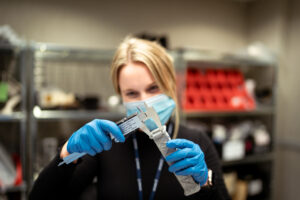
Boeing is 3D printing more than a thousand parts for WGS-11+, a new communications satellite it is producing for the U.S. Space Force
The post Boeing increases use of 3D printing to speed up production of WGS military satellite appeared first on SpaceNews.
Russia looks to China for collaboration in space but faces isolation over Ukraine invasion
Tuesday, 01 March 2022 13:35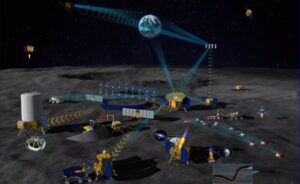
Roscosmos is looking to China as a supplier of components and a partner in missions following the invasion of Ukraine, but sanctions could still heavily impact any new plans.
How the Wallops Command and Data Acquisition Station prepares for GOES-T satellite launch
Tuesday, 01 March 2022 13:00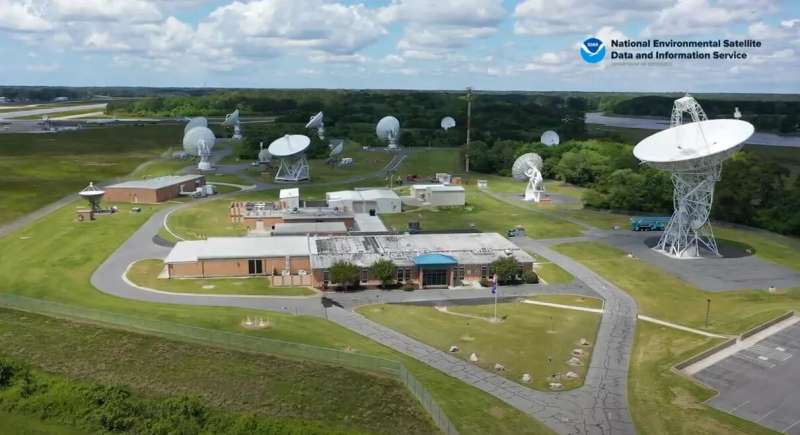
With the upcoming launch of NOAA's new GOES-T satellite, staff at ground stations such as NOAA's Wallops Command and Data Acquisition Station (WCDAS) located at NASA's Wallops Flight Facility are in full swing preparing for the event.
Although Wallops launches smaller rockets as well as research aircraft, unmanned aerial systems, and high-altitude balloons, the facility also supports NOAA's satellite tracking and commanding capabilities.
We spoke with Gregory Johnson, a GOES Ground System Engineer, and Jesse Speidel, Chief of Operations, about just what goes on at Wallops before and after a satellite launch.
First however, they explained that ground stations, like Wallops, are basically radio stations that communicate with satellites from the ground by transmitting and receiving radio waves via large parabolic antennas. Wallops tracks many satellites orbiting Earth this way, as well as deep space satellites that monitor solar activity. The ground stations can send commands to the satellites as well as receive data from them that they then send to be processed.
ISS operations remain normal ahead of private astronaut mission
Tuesday, 01 March 2022 10:25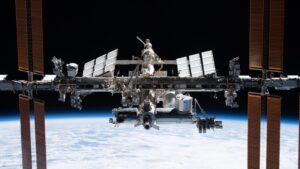
NASA said that operations of the International Space Station remain normal despite the growing rift between Russia and the West in response to Russia’s invasion of Ukraine.
The post ISS operations remain normal ahead of private astronaut mission appeared first on SpaceNews.
Rocket Lab launches Electron rocket, selects Virginia for Neutron factory
Tuesday, 01 March 2022 09:17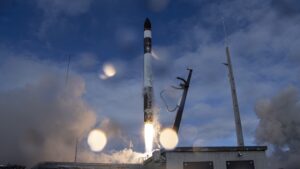
Rocket Lab carried out its first Electron launch of the year Feb. 28, placing a Japanese radar imaging satellite into orbit at the same time the company released its financial results and selected Virginia for a rocket factory.

